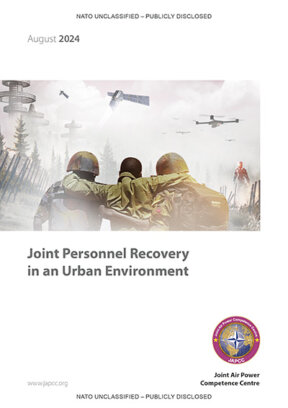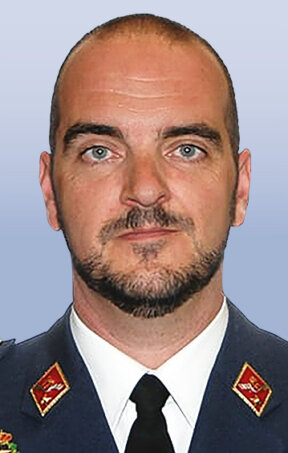Executive Summary
Urban warfare is not a new phenomenon: Syria, Iraq, Ukraine, and Gaza are just some of the most recent examples. As global urbanization accelerates, it becomes increasingly probable that the Alliance will be involved in more Urban Operations (UO) than it experienced in the past. When conducting a military operation in an Urban Environment (UE), two challenges immediately arise: ‘One is simply being able to understand the environment.1 The other is being able to understand how to operate in the environment’. Both these challenges are harder to manage and train for in an UE than in any other battlespace. Moreover, history has demonstrated that technological superiority may be hampered by the complexity of urban terrain, as in the case of the 1993 Black Hawk Down event. Militaries will face challenges in the intricate concrete jungle: short-range engagements, limited manoeuvre room, degraded Command, Control and Communications (C3) and navigation systems, three-dimensional battlespace, and defenders’ tactical advantages. Additionally, the high risk of Collateral Damage (CD) due to the density of non-combatants and no-strike targets will limit weapon choices and potentially delay decision-making. The same challenges that an UE poses to military operations will also affect how NATO will conduct Joint Personnel Recovery (JPR).
In operations, the isolation, capture, and exploitation of NATO personnel may have a considerable negative impact, affecting operational security, the morale of assigned forces, and, more widely, next of kin, families, and public support. NATO, therefore, must have a system able to recover all personnel under its responsibility who may become isolated and need to survive, evade, resist exploitation, and escape.
‘By pledging to put every effort into recovering our highly trained [personnel], we send a powerful signal about their importance and help sustain their spirit under the stress of combat.’
General Henry H. Shelton, US Army, 14th Chairman of the Joint Chiefs of Staff, 27 October 1999, JP 3-50
JPR is considered a high-visibility tactical mission with potential operational, strategic, political, and social implications. Particularly in UEs, the success or failure of recovery operations will be magnified and widely publicized via the numerous social media and networks present in a city, thus increasing the burden of responsibility for planners and decision-makers. Therefore, the capability to conduct urban JPR will be an additional operational prerequisite for the Commander, who will have to face the risks intrinsic to the mission and its consequences should it fail: loss of strategic, operational, and tactical momentum and loss of public support.
NATO defines Personnel Recovery as ‘The sum of military, diplomatic, and civil options to effect the recovery and reintegration of isolated personnel’.2 It is a joint and integrated capability in NATO; it requires readiness that involves leadership and force, a robust planning process, and a solid Command and Control (C2) structure.
The question is: Is NATO and the overall JPR community ready for urban JPR? Is the current JPR system, based on its four phases (Preparation, Planning, Execution, and Adaptation), robust enough to manage isolation events in contested areas and accomplish the mission? What changes are needed, and, if needed, in what phases?
This study intends to identify gaps and challenges of the current JPR system related to doctrine, education and training, technologies, and capabilities and provide recommendations to increase the awareness of the global JPR community of interest on the unique requirements UO place on all four phases of the JPR system. To achieve this objective, this study first analyses urban environments and their challenges to military operations, specifically to JPR. It then concentrates on doctrine and new education and training requirements, future technologies, and developing operational concepts deemed necessary to conduct JPR in an urban context successfully. It concludes with considerations and recommendations for the way ahead.
JPR doctrine and Tactics, Techniques, and Procedures (TTPs) do not adequately support urban scenarios. Today, current doctrine and TTPs are focused mostly on air-centric options, as they have historically been the fastest and most effective solutions to recover Isolated Personnel (ISOP). Little or nothing has been written on maritime and land considerations, while SOF employment related to Unconventional Assisted Recovery (UAR) and Non-conventional Assisted Recovery (NAR) has its own specific TTP. Little is mentioned in relation to the diplomatic and civil options for JPR.
‘The future character of conflict has been described by the 5Cs. They may not be applicable for all environments, but they absolutely resonate with the future urban battlespace: it will be more congested, more cluttered, more contested, more connected, and more constrained…It is critical for NATO to think in this space, and remain adaptable and resilient enough to operate in the most challenging physical and human environment. It is not if we have to, but when we have to…and we need to get it as right as possible, when we do.’
Brigadier Ian Rigden, British Army, Head of Land and Research Development, Concepts and Doctrine Centre
In terms of education and training, an urban Survival, Evasion, Resistance, and Extraction (SERE) training programme already exists for potential ISOP. However, no specific training programme has been developed for Recovery Forces (RF) and PR Staff elements working at the Joint Personnel Recovery Centre (JPRC) and Personnel Recovery Coordination Cell (PRCC). Education and training for all three elements of a JPR system (Commanders and Staff, RF, and ISOP) should incorporate robust UE scenarios and consider multi-domain mission requirements. Education and training upgrades in urban JPR must be coupled with modern technologies, aiming to make training more realistic and efficient. In the near future, the most effective solution will be investing in virtual reality simulation and a dedicated military metaverse combined with real-life training.
New capabilities, procedures, and techniques will be necessary to conduct effective JPR missions in an UE. RF and ISOP will operate in the same three-dimensional battlespace where friendly, neutral, and hostile actors interact in a large, congested environment. Information superiority and a holistic multi-domain strategy are essential for mission success. To succeed, a new generation of conventional and non-conventional capabilities, manned and uncrewed systems, advanced integrated and synchronized information technologies, and multi-domain systems will be necessary.
Urban JPR will also need to involve external governmental and non-governmental agencies in supporting/supported relations with the military. An all-encompassing strategy for JPR should consider the potential for strong collaboration with pertinent non-military organizations to open diplomatic channels in cases where the military option is not viable.
The recovery of isolated personnel in a hostile environment has always been a challenging mission. An isolation event can occur unexpectedly, requiring Commanders to be ready to respond at a moment’s notice. Failing to rescue our personnel could have dire consequences for the entire operation. In urban environments, these challenges are heightened due to the nature of the surroundings and how the threat can easily blend in. As military operations in urban areas become more common, NATO must reassess its approach to JPR planning and execution.
The challenges that NATO may encounter while operating in an urban environment are not exclusive to JPR, but are relevant to all operations. This study, aimed primarily at the JPR community, may also be of interest to a broader audience, including military planners and all military entities participating in NATO operations.











